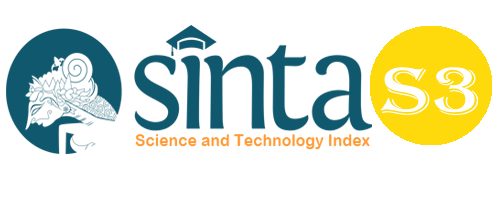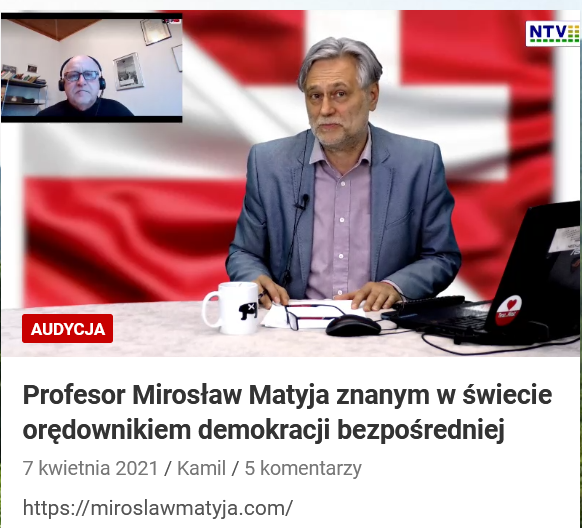Students’ Ability in Conversation (The Case of SMPN 3 Teminabuan Grade IX)
Abstract
This study aims to know the students’ ability level, students’ problems, and solution in conversation. Researcher describes the same conditions that have occurred in the Teminabuan district, West Papua. In this area, students experienced difficulties in learning English, especially in communication or conversation. Researcher used qualitative research methods, because they fit perfectly with the problem under study. The research instruments were observation, data of documentation, and interviews with students and English teachers at SMPN 3 Teminabuan. Research data in this study used documentation, observation and interview that was asked and questioned to respondents to be done and answered in order to get valid answers. In addition, researcher also monitors students learning methods and learning systems to measure students’ abilities in learning English conversation. The documentation that used were 20 dialogs of conversation and the interview were questions that had been provided. Data Analysis obtained by means of qualitative descriptive techniques in the form of descriptions of phenomena that occur in the SMPN 3 Teminabuan district. The results show that the factors that influence the level of students' ability in English conversation are lack of mastery of five basic elements, namely fluency, grammar, vocabulary, pronunciation and comprehension.
Keywords
Full Text:
PDFReferences
A Maharida, M. (2014). Using Substution Drill Technique to Improve Students’ Pronunciation Ability. Exposure : Jurnal Pendidikan Bahasa Dan Sastra Inggris, 3(2), 178. doi:10.26618/ejpbi.v3i2.836
A study of high school students learning disability in English language and reading habits. (2020). Strad Research, 7(7). doi:10.37896/sr7.7/056
Aarts, H., & Custers, R. (2012). Unconscious Goal Pursuit: Nonconscious Goal Regulation and Motivation. The Oxford Handbook of Human Motivation, 231–247. doi:10.1093/oxfordhb/9780195399820.013.0014
Agus, M. Santoso., Mohammad, Amin, Sutiman, B. Sumitro., and Bettty, Lukiati. (2017). Learning Motivation of Students during the Implementation of lecturing Based in Silico Approaach. Malang State University, University of Nusantara Kediri, and Brawijaya University, Indonesia.
Al-Alwani, A. (2013). Intrinsic and Extrinsic Motivation to E learning in Higher Education Institutions. International Journal of Computers & Technology, 12(1), 3131–3137. doi:10.24297/ijct.v12i1.3358
Ali Al-Oglah, T. M. (2018). Teaching and Learning English as a Foreign Language. International Journal of English Language Teaching, 5(2), 57. doi:10.5430/ijelt.v5n2p57
Andreas, Johansson, and Rowena, Jansson. (2010). What Influences Students’ Motivation for learning English Grammar. Institution of Language and Literature, Linnaeus University, Sweden
Astuti, R.W., Waluyo, H.J., and Rohmadi, M. (2019). Character Education Values in Animation Movie of Nussa and Rarra. Budapest International Research and Critics Institute-Journal (BIRCI-Journal). P. 215-219.
Audrey, L. Amrein. and David, C. Berliner (2003). Students’ motivation and Learning.
Azhar, A. (2018). Students’ Trends in Islamic Communication Postgraduate in2010-2016 State Islamic University of North Sumatera (UINSU). Budapest International Research and Critics Institute (BIRCI-Journal), P.206-214.
Blokhina, A. (2020). Assessment As Motivation Of Foreign Language Learning For Non-Linguistic University Students. doi:10.15405/epsbs.2020.04.02.42
Carpenter, J. M., Green, M. C., & Fitzgerald, K. (2018). Mind-reading motivation. Scientific Study of Literature, 8(2), 211–238. doi:10.1075/ssol.18011.car
Caruana, S. (2021). An Overview of Audiovisual Input as a Means for Foreign Language Acquisition in Different Contexts. Language and Speech, 002383092098589. doi:10.1177/0023830920985897
Elizabeth, E., & Ena, O. T. (2019). intrinsic and extrinsic motivation of english education graduation students batch 2018 in accomplishing academic performance. ideas: Journal on English Language Teaching and Learning, Linguistics and Literature, 7(2). doi:10.24256/ideas.v7i2.997
Endahati, n. (2020). improving speaking ability on public speaking class by using role-playing technique of english education department students. ELTICS : Journal of English Language Teaching and English Linguistics, 1(1). doi:10.31316/eltics.v1i1.384
Gallo, M., & Rinaldo, V. (2011). Intrinsic versus extrinsic motivation: A study of undergraduate student motivation in science. Teaching and Learning, 6(1). doi:10.26522/tl.v6i1.379
Georgeta, Panisora., Nicoleta, Duta.,Ion-Ovidiu, Panisora.(2015). The Influence of reasons Approving on Student Motivation for Learning. Faculty of Psychology and Educational Sciences, University of Bucharest, Romania.
Goodwin, J., & O’Connor, H. (2015). Contextualising the Research Process: Using Interviewer Notes in the Secondary Analysis of Qualitative Data. The Qualitative Report. doi:10.46743/2160-3715/2006.1679
Green, K., & Fujita, J. (2016). Students of Different Subjects Have Different Levels of Extrinsic and Intrinsic Motivation to Learn English: Two Different Groups of EFL Students in Japan. English Language Teaching, 9(9), 156. doi:10.5539/elt.v9n9p156
Gumartifa, A. (2020). The Anxiety of Language Learning and Language Skills: Conceptual Problems and Helpful Ideas to the Study of English as a Foreign Language. ELTICS : Journal of English Language Teaching and English Linguistics, 5(2). doi:10.31316/eltics.v5i2.864
Handayani, R. D. (2017). analysis of instrinsic and extrinsic motivation of physics-teacher student candidates. Jurnal Kependidikan: Penelitian Inovasi Pembelajaran, 1(2). doi:10.21831/jk.v1i2.8449
Hariri, H. (2021). Motivation and Learning Strategies: Student Motivation Affects Student Learning Strategies. European Journal of Educational Research, 10(1), 39–49. doi:10.12973/eu-jer.10.1.39
Hassan, I., & Bhat, T. H. (2012). Student Motivation-Five key element. International Journal of Scientific Research, 3(6), 35–37. doi:10.15373/22778179/june2014/184
Herzberg, F., Mausner, B., & Snyderman, B. B. (2017). Motivation versus Hygiene. The Motivation to Work, 113–119. doi:10.4324/9781315124827-14
Hidayati, N. (2018). Using a Teaching Media of Homophone Stories to Improve Students’ Vocabulary Mastery: A Case of Seventh Grade Students at SMP N 1 Kranggan. ETERNAL (English Teaching Journal), 8(2). doi:10.26877/eternal.v8i2.3050
International Journal, 1–17. doi:10.34105/j.kmel.2014.06.001
Iqmaulia, K., & Usman, O. (2019). Needs Influence, Reward, Interest and Motivation Learning Environment on Learning Motivation in Higher Education. SSRN Electronic Journal. doi:10.2139/ssrn.3510181
Jana, M. Saranova., and Martin Sikyr. (2016). The Study of University Students’ Motivation. Czech Technical University in Prague, Masaryk Institute of Advanced Sudies, Czech republic.
Jutarat, Vibulphol (2016). Student Motivation and Learning and Teachers’ Motivational Strategies in English Classroom in Thailand. Faculty of Education, Chulalongkorn University, Bangkok, Thailand.
Karina, M. Amirkhanova., Anastasia, V. Ageeva., and Rustam, M. Fakhretdinov. (2016). Enhancing Students’ Learning Motivation through reflective Journal Writing. The European Proceeding of Social Behavioral Sciences.
Komol, T., & Suwanphathama, S. (2020). Students’ Perceptions and Attitudes Toward the Use of Communicative Language Teaching (CLT) to Improve English Listening and Speaking Skills. English Language and Literature Studies, 10(4), 40. doi:10.5539/ells.v10n4p40
Koo, M., & Fishbach, A. (2014). Dynamics of self-regulation: How (un)accomplished goal actions affect motivation. Motivation Science, 1(S), 73–90. doi:10.1037/2333-8113.1.s.73
Kurniati, T. (2015). upaya meningkatkan motivasi belajar siswa dalam pencapaian kualitas pendidikan yang optimal melalui training secara emosional dan psikologis di mts dan ma minhajul amilin desa sungai asam. Jurnal Buletin Al-Ribaath, 12(1). doi:10.29406/br.v12i1.506
Li, Y., Sheldon, K. M., & Liu, R. (2015). Dialectical thinking moderates the effect of extrinsic motivation on intrinsic motivation. Learning and Individual Differences, 39, 89–95. doi:10.1016/j.lindif.2015.03.019
Liu, Y. (2014). Motivation and Attitude: Two Important Non-Intelligence Factors to Arouse Students’ Potentialities in Learning English. Creative Education, 05(14), 1249–1253. doi:10.4236/ce.2014.514140
Ludwig, K. (2016). Action, Motivation, Explanation, and Intention. From Individual to Plural Agency, 36–45. doi:10.1093/acprof:oso/9780198755623.003.0004
Lumaden, Linda. S. (1994). Students’ motivation. ERIC Clearing House on educational Management, Eugene, Alexandria.
M. Theobald. (2005). Increasing Student Motivation. Professor of Middle and Secondary Education, Southeast Missouri State University.
Mappiasse, S. S., & Sihes, A. J. B. (2014). Evaluation of English as a Foreign Language and Its Curriculum in Indonesia: A Review. English Language Teaching, 7(10). doi:10.5539/elt.v7n10p113
Maria Anjaryani, A., & Noor Edwina, T. (2020). motivasi belajar pada siswa asli papua terhadap implementasi pendidikan karakter. G-Couns: Jurnal Bimbingan Dan Konseling, 4(1). doi:10.31316/g.couns.v4i1.460
McClelland, D. C. (1965). Toward a theory of motive acquisition. American Psychologist, 20(5), 321–333. doi:10.1037/h0022225
Mihaljević Djigunović, J. (2015). Investigation of attitudes and motivation in early foreign language learning. Children and English as a Foreign Language, 31–52. doi:10.17234/9789531755603.05
Nastas, N. (2019). Motivation – Factor In Learning English By Students From Physical Education Faculties. doi:10.15405/epsbs.2019.02.61
Nur khairani, d. h. (2020). penerapan model pembelajaran think pair share untuk meningkatkan hasil belajar siswa pada mata pelajaran bahasa inggris siswa mts negeri binjai. jurnal serunai bahasa inggris, 12(1), 53–63. doi:10.37755/jsbi.v12i1.277
Oktaviani, Pratiwi, Wijaya., and Imam, Bukhori. (2017). Affect of Learning Motivation. Education Administration Office State University of Malang, Indonesia.
Olestic, A. (2014). Intrinsic And Extrinsic Motivation for Learning English as a Foreign Language By student From Sweden University, Sweden. Http.eltajournal.org
Palmer, D. (2020). Teacher Enthusiasm and Student Motivation for Learning. Global Journal of Educational Studies, 6(1), 40. doi:10.5296/gjes.v6i1.16405
Patricia, L. Hardre., and Friends (2006). Factors Affecting High School Sudents’ Academic Motivation in Taiwan. University of Oklahoma, USA.
Prasanti, R. A., Muzammil, L., & Widiastuti, O. (2020). The Use of Conversation Diary in Enhancing Students’ English Speaking Skill. Journal of Education Research and Evaluation, 4(2), 208. doi:10.23887/jere.v4i2.24720
Ramli, Bakar (2014). The Effect of Learning Motivation on Student Productive Competences in Vocational High School west Sumatra. Faculty of Engineering, State University of Padang, Indonesia.
Refnita, L. (2012). The Effectiveness of an Integrated Assessment to Improve the Students’ English Grammar Ability. Lingua Didaktika: Jurnal Bahasa Dan Pembelajaran Bahasa, 6(1), 45. doi:10.24036/ld.v6i1.7399
Rosa, C. H., & Yahmun, Y. (2019). Implementing Collaborative Strategy to Imrove Reading Comprehension the Eleventh Graders of SMK Kertha Wisata Malang. Journey (Journal of English Language and Pedagogy), 1(2), 60–66. doi:10.33503/journey.v1i2.253
Saleh, A., Mujahiddin. (2020). Challenges and Opportunities for Community Empowerment Practices in Indonesia during the Covid-19 Pandemic through Strengthening the Role of Higher Education. Budapest International Research and Critics Institute-Journal (BIRCI-Journal). Volume 3, No 2, Page: 1105-1113
Salsabila,T., &Usman, O. (2021). Influence of Student motivation, Student learning facilities, and lecturer teaching skills towards learning interest. SSRN Electronic Journal. doi:10.2139/ssrn.3768537
Sartika, t. (2019). Penggunaan Bahasa Indonesia dan Bahasa Inggris Sebagai Pengantar Pembelajaran di Indonesia. doi:10.31227/osf.io/y8tq4
Schreiber, L. M., Paul, G. D., & Shibley, L. R. (2012). Public Speaking Competence Rubric. PsycTESTS Dataset. doi:10.1037/t40709-000
Sultan Ali, R. Alkaabi., Warda, Alkaabi., Ajman., and Glen, Vyver. (2017). Researching Students’ motivation. National Defence College, UAE., First Academy ,UAE., And Sunbern University of Technology of Australia.
Suparman, L. (2017). The Effectiveness of the English Conversation to Improve Students’ Speaking Skill. PALAPA, 5(2), 38–52. doi:10.36088/palapa.v5i2.45
Syahyuri, S. (2018). The Effect of Community Language Learning and Learning Interest Towards Students’ Speaking Ability. Scope : Journal of English Language Teaching, 1(02), 190. doi:10.30998/scope.v1i02.1354
Taylor, S. J., Bogdan, R. C., & Walker, P. (n.d.). Qualitative research. Encyclopedia of Psychology, Vol. 6., 489–491. doi:10.1037/10521-156
Thongma, Souriyawongsa., Ismail, Roob., and Mohammad, Jafra, Zainol, Abidin. (2012). Study on Students’ Motivation in Joining an English Course. University Sains Malaysia.
Timothy L, Seifert. (2004). Understanding Student Motivation. Article in Educational Research.
Tomoharu, Takahashi. (2018). Motivation of Student for Learning English in Rwandan Schools. Kyoto University, Japan
Triyanto. (2019). The Academic Motivation of Papuan Students in Sebelas Maret University, Indonesia. Journals.sagepub.com.
Ul Hoque Eiten, E., Hasan Parvez, M., & Q Khan, K. (2019). Conscious Use of Code-Switching to Improve Fluency in Spoken English Of Bangladeshi Students. Humanities & Social Sciences Reviews, 7(6), 247–254. doi:10.18510/hssr.2019.7645
Vansteenkiste, M., Lens, W., & Deci, E. L. (2006). Intrinsic Versus Extrinsic Goal Contents in Self-Determination Theory: Another Look at the Quality of Academic Motivation. Educational Psychologist, 41(1), 19–31. doi:10.1207/s15326985ep4101_4
Wa Ode Tika Rizky, Suharmoko.(2019) Peningkatan Kemampuan Berbicara Dalam Bahasa Inggris Melalui Storytelling Pada Siswa SMK Negeri 3 Kota Sorong Jurnal Bahasa dan Linguistik Vol. 9 No. 1: Hal. 1-13 (2019)
https://doi.org/10.33506/li.v9i1.731
Weiner, B. (2001). Intrapersonal and Interpersonal Theories of Motivation from an Attribution Perspective. Student Motivation, 17–30. doi:10.1007/978-1-4615-1273-8_2
Wood, R. (2019). Students’ Motivation to Engage with Science Learning Activities through the Lens of Self-Determination Theory: Results from a Single-Case School-Based Study. EURASIA Journal of Mathematics, Science and Technology Education, 15(7). doi:10.29333/ejmste/106110
Xiashi, G., & Lin, Y. (2020). Impact of Language Ego, the Native Language Effect on Oral English Learning of High School Students. International Journal of English and Cultural Studies, 3(1), 33. doi:10.11114/ijecs.v3i1.4841
Zamira, Hado. (2016). Students’ Motivation factors Albania case. English Language and Literature Departement. Beder University, Albania.
Zulfiqar, Ali., Ijaz, Ahmad. Tatlah., and Muhammad, Saeed. (2010). Motivation and Students Behaviour. University of Education, Lahore, Pakistan.
DOI: https://doi.org/10.33258/birci.v5i1.3672
Article Metrics
Abstract view : 74 timesPDF - 35 times
Refbacks
- There are currently no refbacks.

This work is licensed under a Creative Commons Attribution-ShareAlike 4.0 International License.

This work is licensed under a Creative Commons Attribution-ShareAlike 4.0 International License.

_.gif)

















_.gif)



